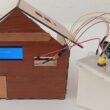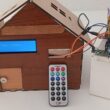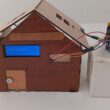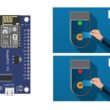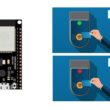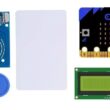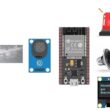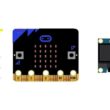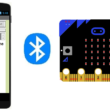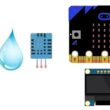HC-SR501 PIR motion sensor
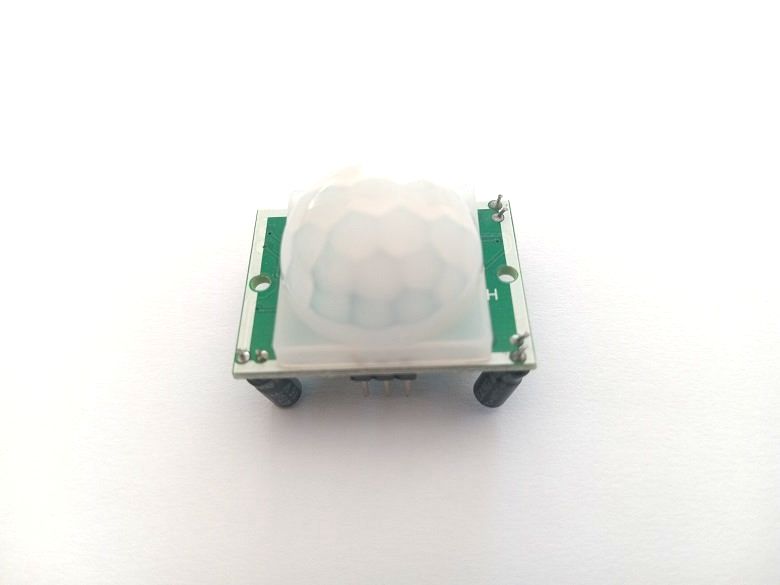
Definition of HC-SR501 PIR motion sensor
The HC-SR501 is a PIR (Passive Infrared) motion sensor that can detect human or animal movement within its detection range. It operates on the principle that all living beings emit infrared radiation, and the sensor can detect this radiation to trigger a response.
The HC-SR501 PIR motion sensor has three pins: VCC, GND, and OUT. VCC is the power supply pin and should be connected to a 5V power source. GND is the ground pin and should be connected to the ground of the power source. OUT is the output pin and will be set high (3.3V) when motion is detected and low (0V) when no motion is detected.
The detection range of the HC-SR501 can be adjusted by using the potentiometers on the module. The delay time and sensitivity can also be adjusted using the potentiometers.
The HC-SR501 is commonly used in security systems, automatic lighting systems, and other applications where motion detection is required. It can be easily integrated with microcontrollers such as Arduino or Raspberry Pi to trigger an action when motion is detected.
The HC-SR501 PIR motion sensor plays an important role in various electronic projects and applications where the detection of human or animal motion is necessary. Here are some of the common roles of this sensor:
Security: The HC-SR501 PIR motion sensor is widely used in security systems to detect any movement in the monitored area. When the sensor detects any motion, it can trigger an alarm or a notification to alert the user of the presence of an intruder.
Energy Efficiency: The sensor can be used in automatic lighting systems, where lights are automatically turned on or off based on the presence or absence of human or animal motion in the area. This helps to save energy by turning off lights when they are not needed.
Robotics: The HC-SR501 PIR motion sensor can also be used in robotics projects to detect the presence of humans or animals in the robot's path or in the robot's workspace. This can help the robot to avoid obstacles or interact with humans in a more natural way.
Home Automation: The sensor can be used in home automation systems to detect when someone enters or leaves a room. This information can be used to trigger actions such as turning on or off lights, adjusting the temperature, or activating an audio system.
Microcontrollers compatible with the HC-SR501 PIR motion sensor
The HC-SR501 PIR motion sensor is compatible with various microcontrollers, including but not limited to:
Arduino: The HC-SR501 PIR motion sensor can be easily connected to an Arduino board and used in various projects.
Raspberry Pi: The sensor can be connected to a Raspberry Pi and used to detect motion in projects such as home automation, security systems, and robotics.
ESP8266: The HC-SR501 PIR motion sensor can be connected to an ESP8266 WiFi module to build projects such as home automation systems that can be controlled remotely.
STM32: The STM32 microcontroller is a powerful and versatile microcontroller that can be used with the HC-SR501 PIR motion sensor to build complex projects such as advanced security systems or home automation systems.
PIC: The HC-SR501 PIR motion sensor can be connected to a PIC microcontroller to build projects such as automatic lighting systems, motion-activated alarms, or robotics projects.
In general, the HC-SR501 PIR motion sensor can be used with any microcontroller that has a digital input pin, as long as the voltage levels are compatible. The sensor output is digital and can be connected directly to a microcontroller's digital input pin. The code to interface with the sensor can vary depending on the microcontroller used, but there are many libraries and examples available online for popular microcontrollers like Arduino and Raspberry Pi.
Programming the HC-SR501 PIR Motion Sensor
Programming the HC-SR501 PIR motion sensor is relatively simple, especially if you are using a microcontroller like Arduino, Raspberry Pi, or ESP8266. Here are the basic steps to program the sensor:
1- Connect the sensor to your microcontroller using jumper wires. Make sure to connect the Vcc pin to a 5V power supply, GND pin to ground, and the OUT pin to a digital input pin on your microcontroller.
2- Write a program that reads the digital input pin connected to the OUT pin of the sensor. The program should check whether the input pin is high or low. If the input pin is high, it means the sensor has detected motion, and you can trigger an action like turning on a light or sounding an alarm.
3- To make the program more efficient, you can use interrupts to detect motion instead of constantly polling the input pin. This will reduce the load on your microcontroller and allow it to perform other tasks while still detecting motion.
4- You can also adjust the sensitivity and delay time of the sensor using the onboard potentiometers. This can be done by sending commands to the sensor using your microcontroller.
Here is a simple Arduino program that demonstrates how to use the HC-SR501 PIR motion sensor:
|
1 2 3 4 5 6 7 8 9 10 11 12 13 14 15 |
int pirPin = 2; // digital input pin connected to sensor int ledPin = 13; // digital output pin connected to LED void setup() { pinMode(pirPin, INPUT); pinMode(ledPin, OUTPUT); } void loop() { if (digitalRead(pirPin) == HIGH) { digitalWrite(ledPin, HIGH); // turn on LED } else { digitalWrite(ledPin, LOW); // turn off LED } } |
This program reads the digital input pin connected to the sensor and turns on an LED connected to the microcontroller's digital output pin if motion is detected. You can modify this program to perform other actions based on the motion detected by the sensor.
Role of HC-SR501 PIR Motion Sensor in Robotic Projects
The HC-SR501 PIR motion sensor can play an important role in many robotic projects. Here are some examples:
Robot Navigation: Robots can use PIR motion sensors to detect obstacles and navigate around them. By detecting the movement of objects, the robot can adjust its path and avoid collisions.
Security Robots: PIR motion sensors can be used in security robots to detect movement in a specific area. When the sensor detects motion, the robot can send an alert or take other actions to investigate the area.
Interactive Robots: PIR motion sensors can be used to make robots more interactive. For example, a robot could be programmed to detect a person's movement and react accordingly, such as by turning towards the person or performing a specific action.
Home Automation: PIR motion sensors can be used in home automation projects to turn on lights or other devices when motion is detected. This can be useful in areas like hallways or bathrooms where a person's presence is brief.

